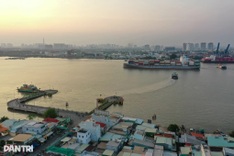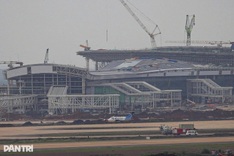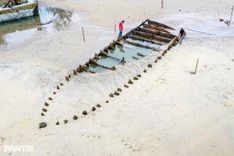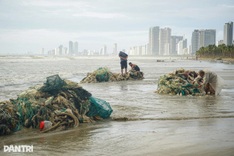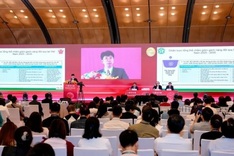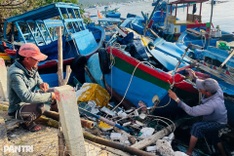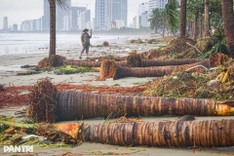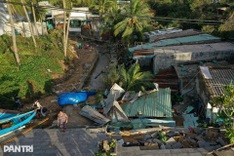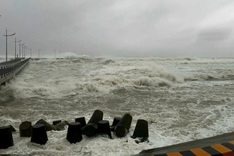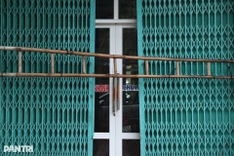The unchecked release of untreated effluents into the environment by a majority of industrial parks (IPs) is killing rivers as well as fishing as a vocation in many localities nationwide, residents complain.
 |
| Authorities in Ho Chi Minh City carry out check-ups on wastewater discharged from Dong An Industrial Park. The discharge of untreated effluents into the environment by industrial parks is killing rivers |
Officials at all levels agree.
A recent report by the Department of IP Management under the Ministry of Planning and Investment said just 105 out of 260 industrial parks (IPs) in the country had central wastewater treatment systems.
The remaining 155 dumped their effluents directly into the environment without any treatment, and this poses a serious pollution threat, the department said.
Inspectors with the Ministry of Natural Resources and Environment affirmed this, saying 40 percent of IPs in the country have been targeted for inspection after violating environment protection laws.
In HCM City, inspectors of the city Department of Natural Resources and Environment have said that the Cat Lai 2, Hiep Phuoc, Tan Tao, Tan Thoi Hiep, Tay Bac Cu Chi and Binh Chieu IPs released around 1,000 cubic metres of untreated wastewater directly into the environment every day.
The department has also listed other IPs such as Tan Phu Trung, Linh Trung III, Le Minh Xuan as hotspots of environmental pollution.
In neighbouring Binh Duong Province, 14 out of 21 IPs have been found polluting the environment with untreated effluents, including eight that exceeded the allowed level by as much as 10 times.
The eight offenders were: Binh Duong, Song Than 2, Tan Dong Hiep A, Tan Dong Hiep B, Dong An 1, My Phuoc 3, Nam Tan Huyen and Viet Huong 2.
Three out of eight IPs in Ba Ria – Vung Tau Province were operating without a wastewater treatment system and two of them – Phu My I and My Xuan A2 – were exceeding allowed levels, inspectors of the Ministry of Natural Resources and Environment said.
Inspectors have also found that IPs in the northern region were guilty of similar pollution offences as their southern counterparts.
Many people have called for stricter management of waste treatment including making an effective system mandatory for approving an IP.
They have also said that no new IPs should be allowed in localities already suffering pollution caused by existing parks.
Moribund rivers
Rivers are the biggest victims of wastewater discharged by IPs.
In Ba Ria – Vung Tau Province, residents who live on the banks of the Rach Van River, have complained that several factories have severely polluted the river, affecting the fish on which their livelihoods depend.
"The factories often use the cover of rain to illegally release wastewater, killing massive numbers of natural and farmed fish, as well as fish fry," said Duong Van Phan, a resident of Long Son Commune.
This has been happening for the last six years, he said.
Vo Van Mui, chairman of the Long Son Commune, said he had informed concerned agencies about the pollution that has become severe, but there has been no response. "I have to bring the problems up at the upcoming People\'s Council congress," he said.
Fish have been dying in large numbers in a 14-km section of the Serepok River in Dak Lak Province\'s Hoa Phu Commune.
Residents there said the direct discharge of wastewater by sugar mills in the Tam Thang IP, which had a total capacity of 1,500 tonnes of sugarcanes per day, have seriously polluted the river.
Fishermen in the commune have had to give up their vocation, they added.
Unhealthy hospitals
In Ho Chi Minh City, the pollution problem is worsened by hospitals.
A recent report by the city\'s Department of Natural Resources and Environment said there were 7,200 healthcare clinics, 322 local clinic stations and four hospitals operating without waste treatment systems.
Forty hospitals are equipped with waste treatment systems but the amount released is higher than allowed, and the culprits include leading institutions like Cho Ray, Buu Dien II, and Thong Nhat hospitals, as well as the Pasteur Institute.
Experts are concerned that the pollution caused by hospitals can prove more dangerous than normal because they are based in predominantly residential areas.
They acknowledge that authorities have asked the medical institutions to upgrade their waste treatment systems, but add that this is happening at a very tardy pace.
New wastewater treatment kicks off South Korean environmental scientists have urged city officials to use the upflow multi-layer bio reactor (UMBR) for waste treatment as it uses less energy, has lower construction costs, and needs less land compared to conventional activated-sludge processes and other biological nutrient removal processes. "UMBR will also provide easier operation and maintenance, as demonstrated by several full-scale applications," said Eung-Taek Lee, chief of South Korea-based Ecodigm company\'s Technical Research Centre. The UMBR acts as a primary settling tank, anoxic reactor and thickener, and requires low energy by mixing the up-flow stream. A plug flow reaction with the up-flow mode allows a high amount of biomass to be maintained. From September 2009 to August 2010, a pilot UMBR project for sewage treatment with capacity of 30 m3/day ran at Binh Hung Hoa decentralised wastewater treatment plant and Le Minh Xuan Industrial Park. |


